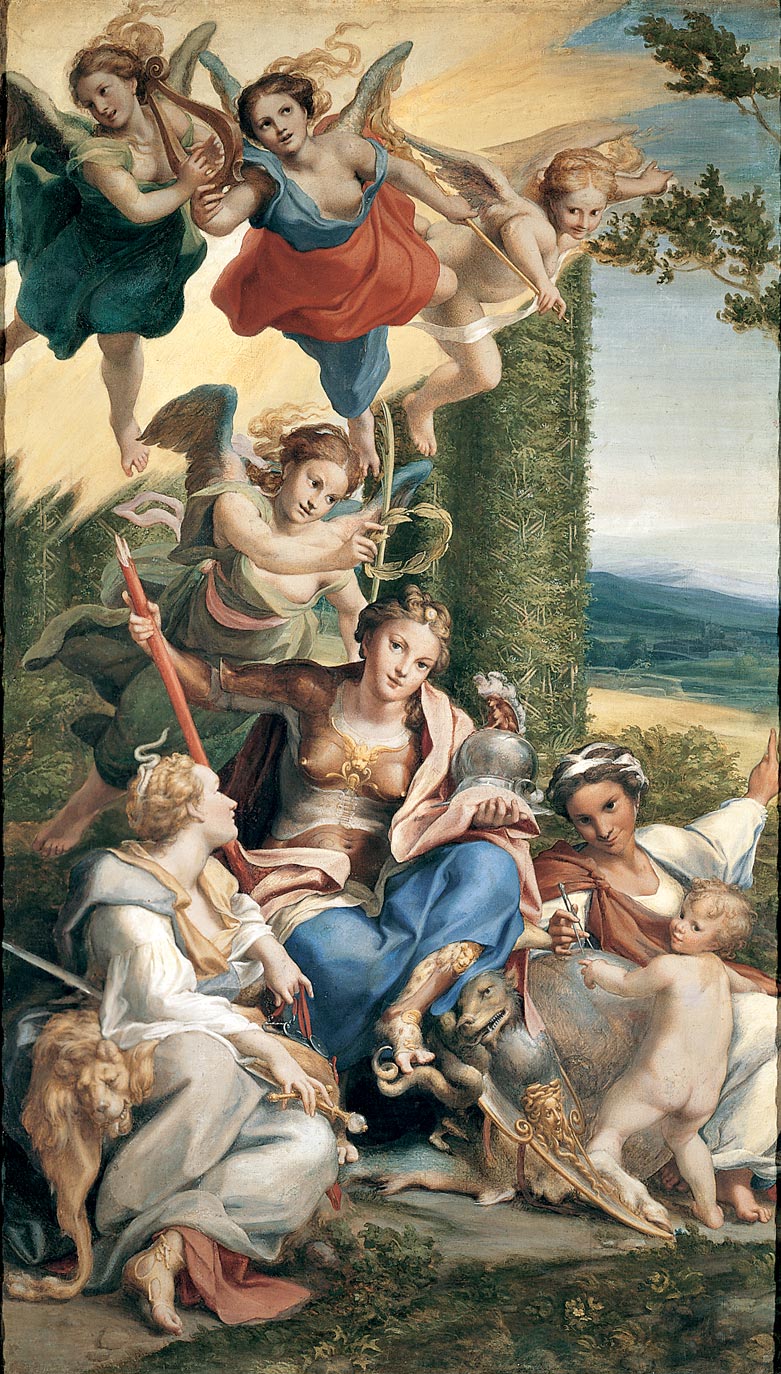 Correggio was a Late Renaissance painter from Parma, Italy. His illusionistic ceilings like Assumption of the Virgin (1526-1530, Parma Cathedral dome; shown right) were a source of inspiration for many Baroque painters who followed in the 17th century. These 17th century artists revered Correggio and considered him and Raphael to be the great Old Masters. Subsequently, Correggio's works were widely collected; people went to great lengths (ahem, scandalous lengths) to get a hold of his art.1 Although Correggio's influence on Baroque painters has been mentioned before, I am particularly interested in how Correggio influenced my favorite Baroque sculptor, Bernini.
Correggio was a Late Renaissance painter from Parma, Italy. His illusionistic ceilings like Assumption of the Virgin (1526-1530, Parma Cathedral dome; shown right) were a source of inspiration for many Baroque painters who followed in the 17th century. These 17th century artists revered Correggio and considered him and Raphael to be the great Old Masters. Subsequently, Correggio's works were widely collected; people went to great lengths (ahem, scandalous lengths) to get a hold of his art.1 Although Correggio's influence on Baroque painters has been mentioned before, I am particularly interested in how Correggio influenced my favorite Baroque sculptor, Bernini.So far, I have read two comparisons between Bernini's work and that of Corregio.2 Bernini's sculpture Truth Unveiled by Time was influenced by the figure of Minerva in Correggio's Allegory of Virtue:
 Correggio, Allegory of Virtue (1528-1530), Louvre
Correggio, Allegory of Virtue (1528-1530), Louvre
In addition, Bernini's St. Longinus has been compared to the Correggio's apostles at Parma Cathedral:
 Bernini, St. Longinus (1629-38); St. Peter's Cathedral, Rome
Bernini, St. Longinus (1629-38); St. Peter's Cathedral, Rome Correggio, detail of apostles (1526-30), Parma Cathedral dome
Correggio, detail of apostles (1526-30), Parma Cathedral dome(You can see how St. Longinus' outstreched arms mimic that of the apostle in the red robe.)
I've always loved Bernini and been intrigued by Correggio. It's fun to find a connection between these two artists, and it makes me like Correggio all the more.
Do you like Correggio? Do you know of any other connections between Correggio and Baroque artists?
Do you like Correggio? Do you know of any other connections between Correggio and Baroque artists?
1 David Ekserdjian writes, "The Este family of Modena were exceptionally insatiable and unscrupulous: they secretly replaced [Correggio's] ‘Notte’ by a copy, the discovery of which caused a riot in Reggio Emilia.". "Correggio." In Grove Art Online. Oxford Art Online, http://www.oxfordartonline.com.erl.lib.byu.edu/subscriber/article/grove/art/T019595, accessed 19 June 2009.
